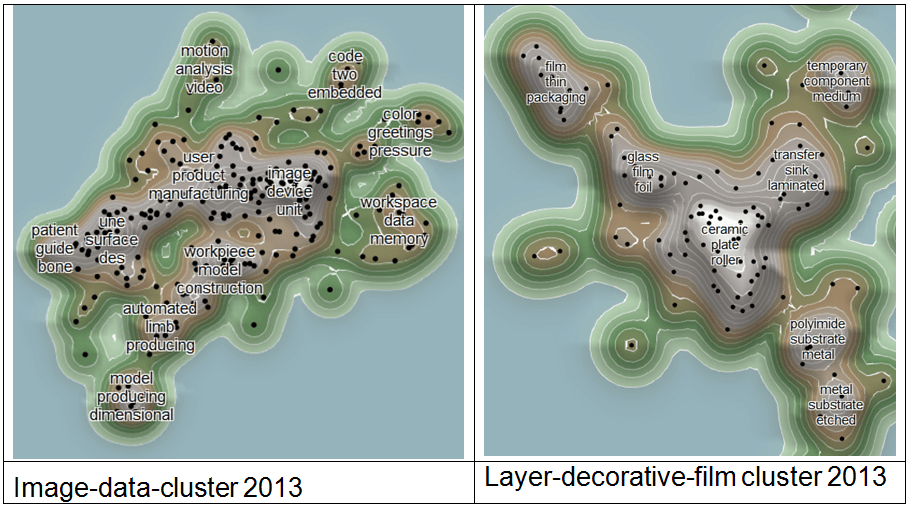3D Printing is currently a much discussed topic. This blog post examines the patent landscape of this important technology.
What is 3D printing?
3D printing involves a series of manufacturing technologies allowing for the creation of volumetric objects by superimposing successive layers of a given material based on a three-dimensional file.
The most commonly used technologies are compaction and injection. The first technology enables compacting powder from a given material and administering it in successive layers, and the second allows for the foundry of plastic materials and resins and their injection into layers.
3D printing is not a new technology. The first 3D printer dates from 1984 and was invented by Charles Hull. It was based on a technique known as stereolithography. For decades, tridimensional printing has been used in manufacturing for tooling, pre-production, production and prototyping processes. However, high costs and low efficiency prevented these printers from becoming commercially successful on a broad scale.
The scenario for 3D printing is set to change in the medium term. The development of high performance computers, the increasing availability of resources and services on the Internet (in the cloud and through communities) and the lowering of costs, is opening up a wide range of new possibilities. Peripheral devices can now affordably "print" physical objects. This will transform computers, which are currently used for creating content, communication, and data storage, into home factories for modeling and fabricating objects.
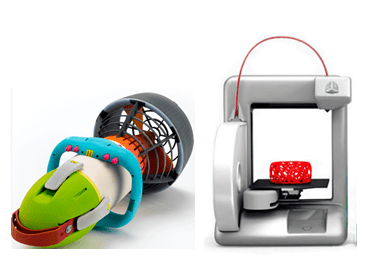
3D printers offer the ability to print parts and assemblies made of different materials with different mechanical and physical properties, often with a simple assembly process. These printers are becoming much more affordable for both material goods manufacturers and for final consumers.
Since 2003 the growth in sales of 3D printers has been sustained, with a remarkable reduction in cost. According to Gartner, in 2014, total spending is estimated to be $669 million—$536 million coming from enterprises and $133 million coming from consumers. See Gartner Says Worldwide Shipments of 3D Printers to Grow 49 Percent in 2013.
Gartner predicts that 3D printing will have large impact on multiple industries. These include consumer products and manufacturing (jewelry, shoes, industrial design, architecture, engineering, automotive and aerospace). It will have a moderate impact in construction, education, energy, government, medical, military, distribution, telecommunications, transportation, geographic information systems and utilities. The impact will be small in banking, financial and insurance services.
What is being patented today in 3D printing?
For this short study we searched for patents related to 3D printing in the IFI CLAIMS Global Database. The CLAIMS Global Database is accessible through CLAIMS Direct, the innovative patent web service for application developers, and through IFI's partner products.
We identified 3,666 patents for the period 2008 to November 2013. Figure 2 shows a growing interest in patentability from 2011 onwards.
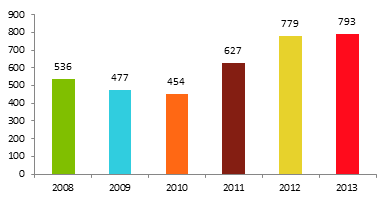
To understand the content of the 3D printing patents, we visualize our search results using KMX Patent Analytics from Treparel. KMX allows us to see clusters around the main topic areas, and also allows us to create a custom classification system using a convenient and iterative Support Vector Machine based Machine Learning system. Figure 3 shows a general landscape of technology areas. These are obtained based on the patent full text. The figure on the right shows the classification results based on a training set and the KMX Support Vector Machine algorithm. Our analysis classifies the 3,666 patents into 22 different application areas.
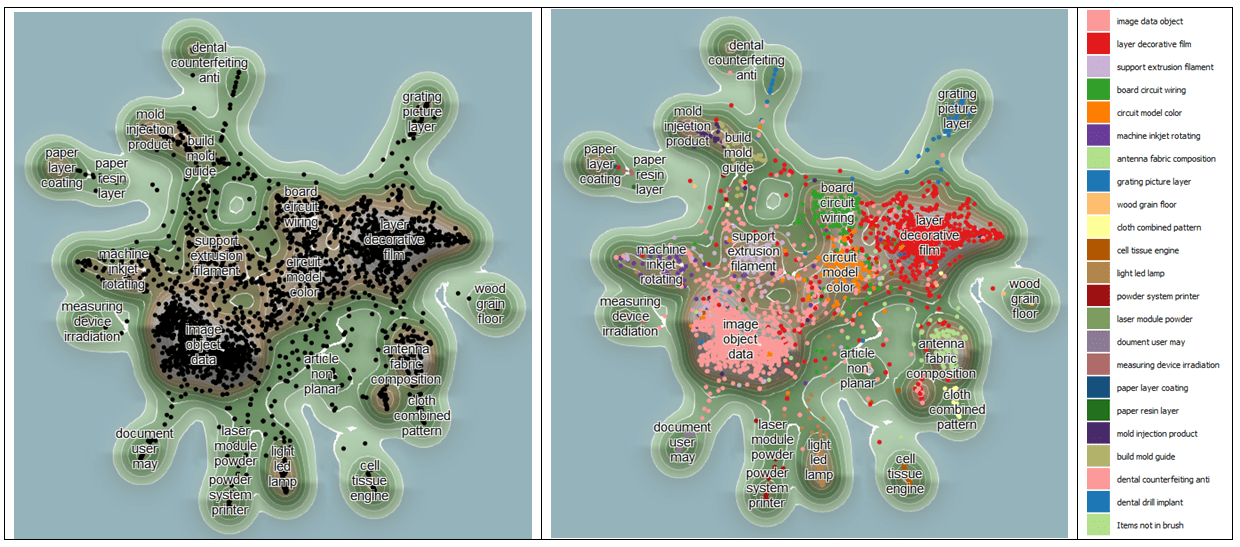
The application areas include: flooring tiles simulating wood by inkjet (wood-grain-floor), gratings, impression of human cells initially for animal experimentation (cell tissue), clothes, antennas used in mobile devices, manufacture of filaments by extrusion, etc. Dental care is a highly advanced application area in which 3D printing enables design (CAD/CAM) and printing of braces and many other parts such as guides, crowns, bridges, etc. A wide variety of materials can be used for 3D printing such as metals, resins, paper, wood, etc. This is also illustrated in Figure 3.
The patent representation reveals another important aspect: the possibility of the implicit copying using 3D printing for the unauthorized manufacture of branded products. The protection of trademarks against counterfeiting requires new solutions and regulations associated with the machines, materials and online services respectively to respond to these new challenges.
Within the studied set two major technology areas are identified: one is related to digital processing of data, images and objects using computers ("image-data-object", with 1,212 patents), and the other relates to the development of decorative effects through the use of several techniques such as coating, liquid supply, etc. ("layer- decorative-film", with 818 patents).
We can zoom over the set of patents in the “layer-decorative-film” area to find out more about its internal structure (Figure 4). The latest developments (2013) in the "layer-decorative-film" cluster include ceramic plate printing methods, molding films with 3D patterns and the use of laser beams for improving compactness.
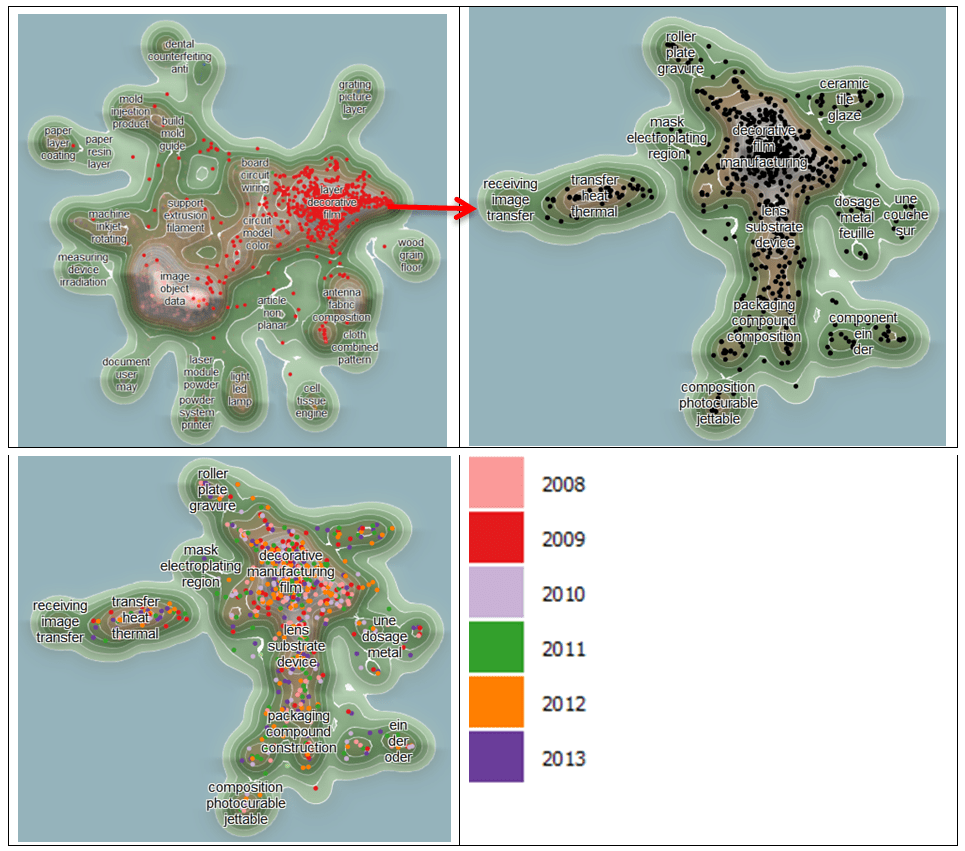
Within the image data object cluster, a prominent area of interest (2013) is motion analysis and workspace memory data management.
Who is patenting in 3D printing?
Over 2,000 assignees/applicants (printer manufactures, online 3D printing offices, professional software developers) have filed patents related to 3D printing in the last six years. Among the top applicants are 3D Systems Inc. (77 patents), Stratasys (95 patentes), Dassault Systemes (88 patents), iMaterialise (51 patents) and the reference CAD based design software developer AutoDesk (212 patents).
These leading companies have not only developed strong patent portfolios, but they have also commercialize printers for a wide variety of (mainly industrial) applications.
3D Systems is a pioneer and a highly diversified company -as can be appreciated in Figure 5. 3D Systems' patents are shown in yellow. Their portfolio and product line covers most of the available technologies in the market (SLA- Stereolithography, SLS selective laser sintering, selective laser melting - SLM). The company manages to offer 3D printers at increasingly affordable prices. Its growth strategy involves the acquisition of many small manufacturers (many of them open source hardware and software developers).
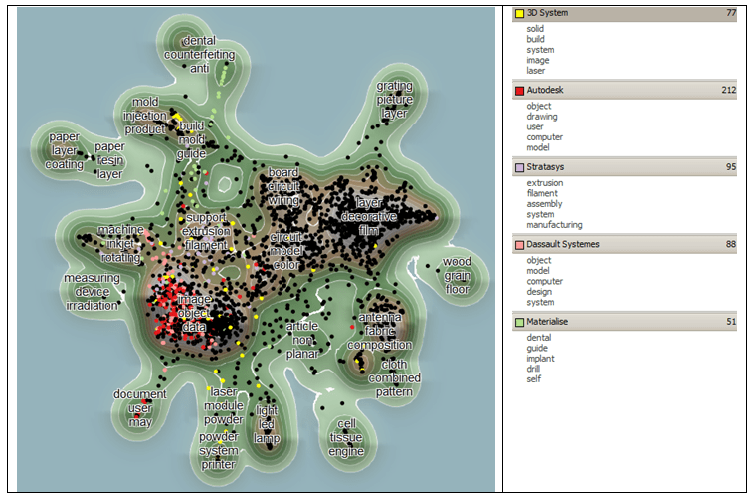
Stratasys (grey) developed FDM (Fused Deposition Modeling) technology - see US-20120162314-A1. Stratasys products include 3D printers for the office segment.
Imaterialise, a service provider for designers, developers and individuals offers access to high quality 3D prints through an online office. It does so through a network of over 1,000 experts, over 80 printers—12 of which are of the world’s largest stereolithography machines- and high quality materials (metals, ceramics and flexible materials).
Dassault Systemes designs 3D software and solutions for the management of products lifecycle all over the world. The company offers SolidWorks (software for the design, simulation, technical documentation and data management), CATIA (design and engineering software for 3D computer aided 3D products) and SIMULIA (simulation applications for finite element analysis) among other products.
Finally, Autodesk, the reference design software solutions developer creates digital files as input for fabrication in 3D. The company has several product lines: Platform Solutions and Emerging Business (PSEB), Architecture, Engineering and Construction (AEC), Manufacturing Solutions (MSD), and media and entertainment (M&E).
Figure 6 shows AutoDesk’s technology profile based on its patent portfolio. As can be observed, some technology areas are concentrated ("point-data-surface", "curves-stream-dimensional", "truss-solid-ensemble", "model-workflow-flow") while others are more dispersed ("motion-animation-looping", "style-drawing-document").
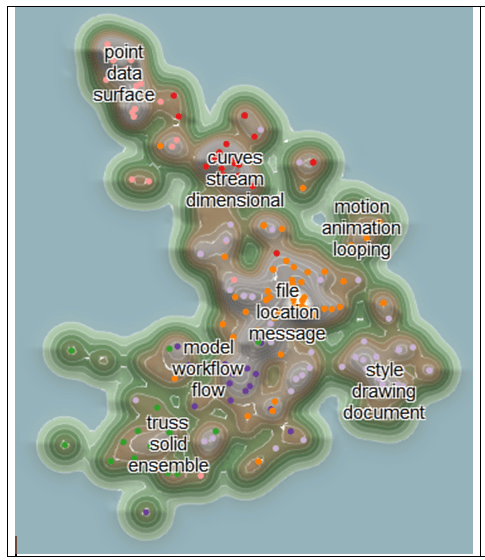
Some key findings
By examining the 3D Printer patent landscape, we can observe the following:
- There is growing interest in patenting 3D printing technology, particularly since 2011.
- Top companies patenting in 3D printing are: 3D Systems Inc., Stratasys, Dassault Systemes, iMaterialise and AutoDesk
- Major technology areas in 3D printing patents are related to:
o digital processing of data, images and objects using computers
o techniques for decorative effects
- Motion analysis and workspace memory data management, ceramic plate printing methods, molding films with 3D patterns and the use of laser beams for improving compactness are among the most recent development areas.
- 3D printing patents evidence the IP implications and concerns regarding 3D printing and unauthorized manufacture of branded products.
References
- The Intellectual Property Implications of Low-Cost 3D Printing
- Gartner Says Worldwide Shipments of 3D Printers to Grow 49 Percent in 2013
- 3D Printing 2013-2025: Technologies, Markets, Players
- Why Patents Won't Kill 3D-Printing Innovation (Op-Ed)
- http://www.3ders.org/articles/20131111-3d-printing-market-worth-billion-by-2020.html
- http://tangible.media.mit.edu/project/inform
- http://en.wikipedia.org/wiki/3D_printing#Intellectual_property
Appendix
Enlargement of the "image-data" and "layer-decorative-film" clusters for the year 2013 are shown below.
